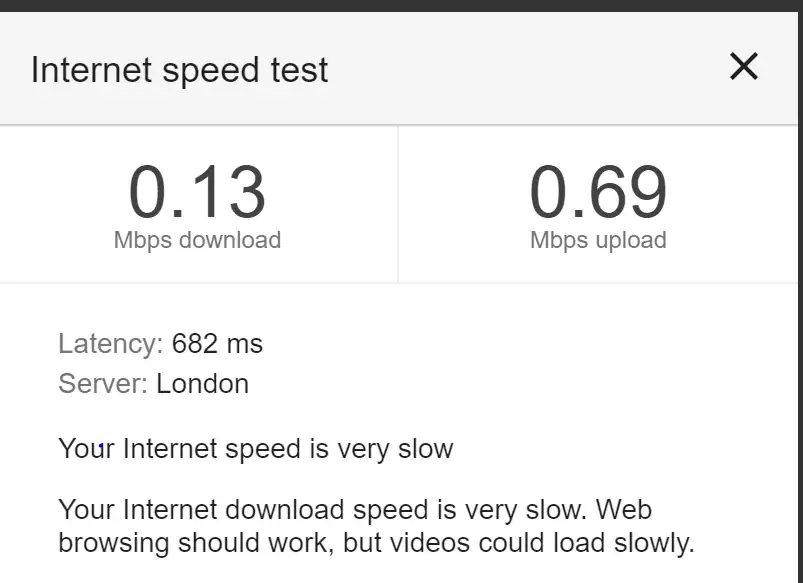Why Streaming Lag Happens and Why It Matters
If you’ve ever sat down to watch your favourite show or the big hockey game and the video starts stuttering or freezing, you’ve been hit by streaming lag. It’s that frustrating delay or pause that breaks immersion and makes even the best IPTV or Netflix session unbearable. In Canada, where internet speeds are often high but networks can still fluctuate, streaming lag remains one of the most common complaints among users.

Streaming lag is more than just an inconvenience — it’s a performance problem affecting your entire viewing experience. In 2025, with 4K content, HDR standards, and live streaming becoming the norm, a single hiccup can ruin quality. Understanding what causes this issue helps you stop it before it ruins another movie night.
Main Causes of Streaming Lag
1. Weak Internet Connection
Even with fibre optics available in most major Canadian cities, your home’s effective speed may fluctuate during peak hours. ISPs often oversubscribe local nodes, meaning your “500 Mbps” plan might deliver only 80 Mbps at 8 p.m. when everyone’s online.
2. Wi-Fi Interference
Walls, microwaves, Bluetooth devices — all can interfere with your wireless signal. A single device downloading a game update can eat up bandwidth and trigger lag across your entire network.
3. Outdated Devices or Routers
Older routers that don’t support Wi-Fi 6/6E standards have slower throughput and higher latency. Similarly, a five-year-old smart TV or Android box may not handle modern codecs efficiently.
4. Streaming Service or CDN Bottlenecks
Even the best platform can suffer outages or routing issues. Sometimes, the lag is on the content delivery network side, especially if you’re routed to a far-away server. CDN congestion can cause temporary buffering or delayed video frames.
How to Diagnose Streaming Lag
- Run a reliable speed test (like Ookla) and record download/upload speeds, ping, and jitter.
- Switch between devices — if only one lags, the issue is likely hardware-related.
- Test both Wi-Fi and Ethernet connections to identify whether wireless interference is the cause.
- Check router logs or firmware version; outdated firmware often causes instability.
- Observe if the lag happens at specific times — this might indicate ISP throttling or congestion.

Quick Fixes to Reduce Streaming Lag
1. Use Wired Ethernet Instead of Wi-Fi
A wired Ethernet connection can cut latency by up to 80 %. If your device supports it, plug directly into the router for a stable data stream.
2. Upgrade to a Wi-Fi 6 or Wi-Fi 6E Router
These routers use advanced multi-band technology to handle many simultaneous devices without losing speed. They also reduce interference from neighbours.
3. Close Background Apps and Downloads
Pause any system updates, torrents, or cloud syncs. Background traffic silently kills your streaming performance.
4. Lower the Streaming Resolution Temporarily
If your internet slows during peak hours, set playback quality manually to 720p or 1080p instead of auto-4K. This small change prevents buffering while maintaining visual clarity.
5. Choose Reliable Streaming Providers
Some IPTV and OTT services compress video poorly or use overloaded servers. Reliable platforms such as streamiptv.ca use optimized CDNs and adaptive streaming technology to keep playback smooth even on weaker connections.
Advanced Tweaks for Persistent Lag
- Change DNS servers: Switch to Google DNS (8.8.8.8) or Cloudflare (1.1.1.1) for faster routing.
- Enable QoS: Prioritize streaming traffic in your router settings so your smart TV gets top bandwidth.
- Update firmware: Keep your router and device software current to fix bugs and improve efficiency.
- Use a VPN smartly: Sometimes a VPN routes you to a better CDN node, improving stability — though it can also slow you down if misconfigured.

Pros and Cons of Fixing Streaming Lag
| Fix | Benefit | Potential Drawback |
|---|---|---|
| Switch to Ethernet | Stable connection and lowest latency | Requires physical cable setup |
| Upgrade Router | Faster speeds for multiple devices | Upfront cost ($150–$400) |
| Lower Resolution | Smoother playback instantly | Slightly less image detail |
| Use VPN | Better routing during congestion | Possible speed reduction |
Streaming Lag in Canada: Real 2025 Insights
According to the 2025 CRTC connectivity report, Canadian households now stream over 82 % of their daily media via online platforms. Yet, 37 % still experience weekly lag due to shared household bandwidth. Fibre expansion in provinces like Ontario and British Columbia reduced the average buffering rate by 22 %, but rural areas still suffer from higher latency due to outdated infrastructure.

Preventing Lag Before It Starts
Prevention is easier than reaction. Set your streaming devices to auto-update at night, reboot routers weekly, and schedule bandwidth-heavy tasks outside prime-time hours. For gamers or IPTV enthusiasts, dedicate one wired device solely to streaming — this minimizes contention and ensures consistent bit-rate delivery.
Conclusion
Streaming lag doesn’t have to ruin your evenings. With a few smart fixes — wired connections, router upgrades, or bandwidth management — your movies, live sports, and IPTV shows can play without interruption. As streaming continues to dominate entertainment in 2025, investing a little effort into optimization will save you countless hours of frustration later.
FAQ
What is streaming lag?
Streaming lag is the delay or stutter that occurs when your device fails to receive or process data fast enough to maintain smooth playback. It can appear as freezing, skipping, or out-of-sync audio.
How much internet speed do I need to prevent streaming lag?
For HD streaming, aim for at least 25 Mbps download and under 30 ms latency. For 4K or multi-device homes, 50–100 Mbps ensures consistent performance.
Why does my stream lag even with fast Wi-Fi?
Wi-Fi interference, outdated routers, or network congestion often cause micro-lags even when overall speed looks fine. Switching to Ethernet or upgrading to Wi-Fi 6 usually solves it.
Can lowering video quality fix lag?
Yes. Reducing resolution decreases bandwidth demand and smooths playback. It’s a quick, effective solution when your connection fluctuates.
Is VPN a good idea for lag?
Sometimes. A well-optimized VPN can reroute traffic through a faster CDN node, reducing lag. But if the VPN server is distant, it can worsen delays — so choose wisely.
What’s the best way to avoid lag long-term?
Combine multiple strategies: keep hardware updated, use wired links for critical devices, upgrade to a strong ISP plan, and pick reliable services like streamiptv.ca that use optimized CDNs and adaptive streaming protocols.







Comments (0)